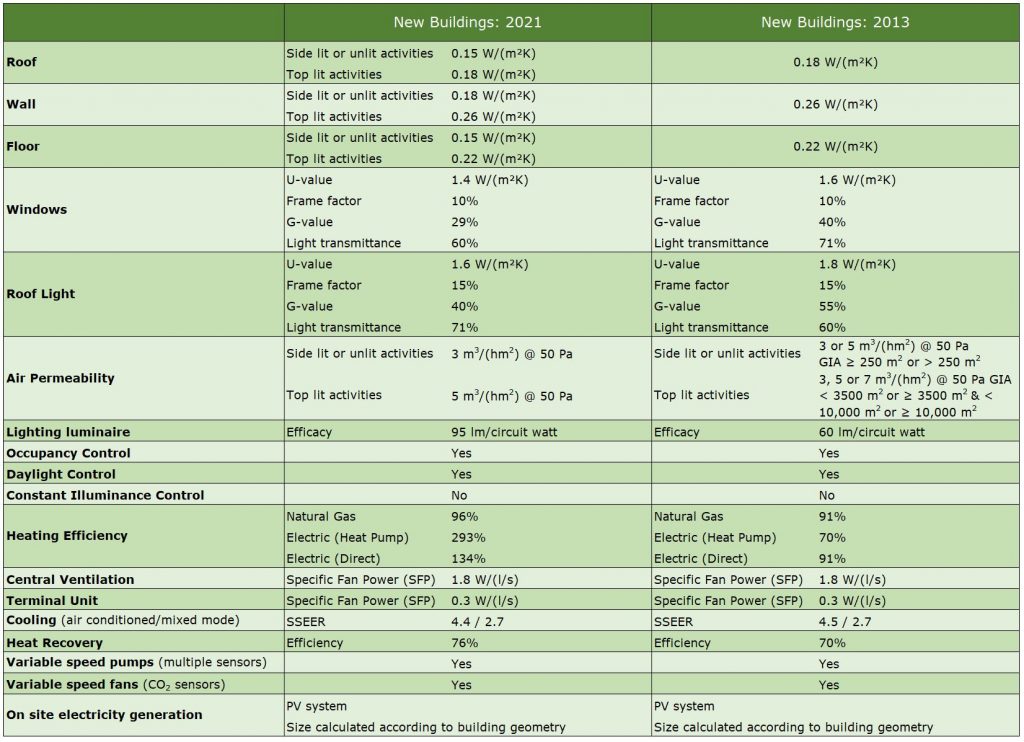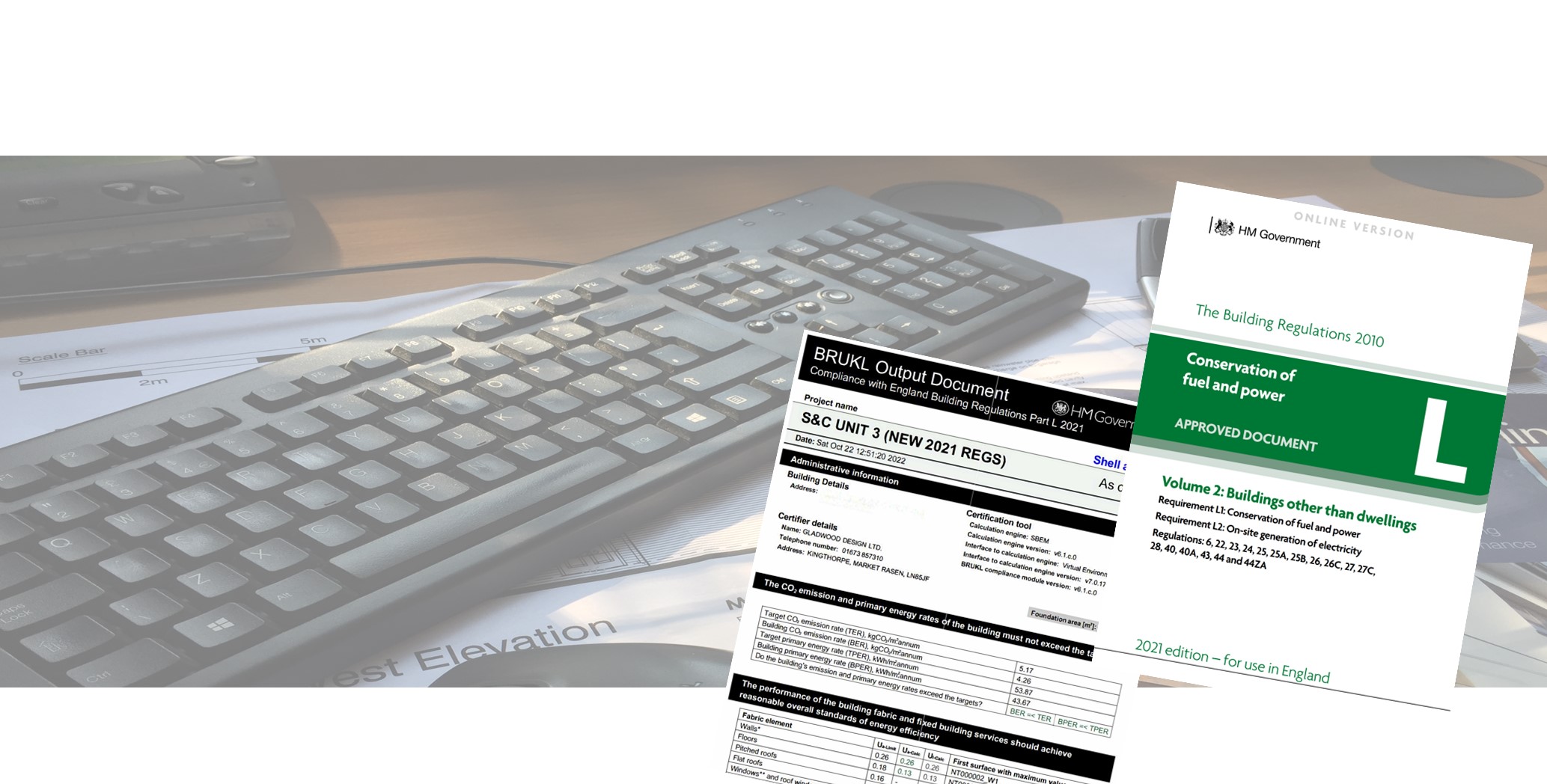The new 2021 Building Regulations are the first major update we have had since 2013, therefore, the changes are significant and are going to have a major effect on the Building industry.
We have included below a brief summary of the key changes implemented to Part L 2021: Volume 2 – Non-Dwellings:
Emissions factors:
- Carbon emission rates as an energy performance metric is retained
- New ‘Primary energy rate’ has been introduced to ensure the primary energy factors account for upstream activities involved in the production of the fuel
- Fuel emissions factors have been updated (particularly to electricity due to grid decarbonisation)
- Grid electricity factor now assessed monthly to reflect variability of grid generation mix.
Notional building specification comparison:

Building Control notification (before work starts):
Building Control require the following:
- TPER and BPER (calculated using design values)
- TER and BER (calculated using design values)
- List of specifications used in the calculations
These should be reported using the Building Regulations UK Part L compliance report (BRUKL report)
- Before building work starts on a new buildings, a feasibility study should be carried out assessing the use of high-efficiency alternative systems in the proposed building design
- Notify Building Control that the analysis has been undertaken, is documented and available to be verified. The document should state whether high-efficiency alternative systems have been included (same as 2013 regulations)
- When a building undergoes a major renovation, consider technical, environmental and economic feasibility of installing high-efficiency alternative systems
Limiting the effects of solar gains in summer:
Care homes, student accommodation and similar will be subject to the new Part O Regulations.
Criterion 3 checks are still required but reference glazing systems are more challenging. These checks are applicable even if cooling is specified. The intention is to limit solar gains during the summer and thus reducing the need and the capacity air-conditioning system that are proposed.
Minimum building services efficiencies and controls:
The old ‘Non-Domestic Building Services Compliance Guide’ has been superseded and the guidance is now contained within Volume 2.
For further information on the new Part L: Volume 1 and Volume 2, please contact us for your free copy of our PDF documents.


